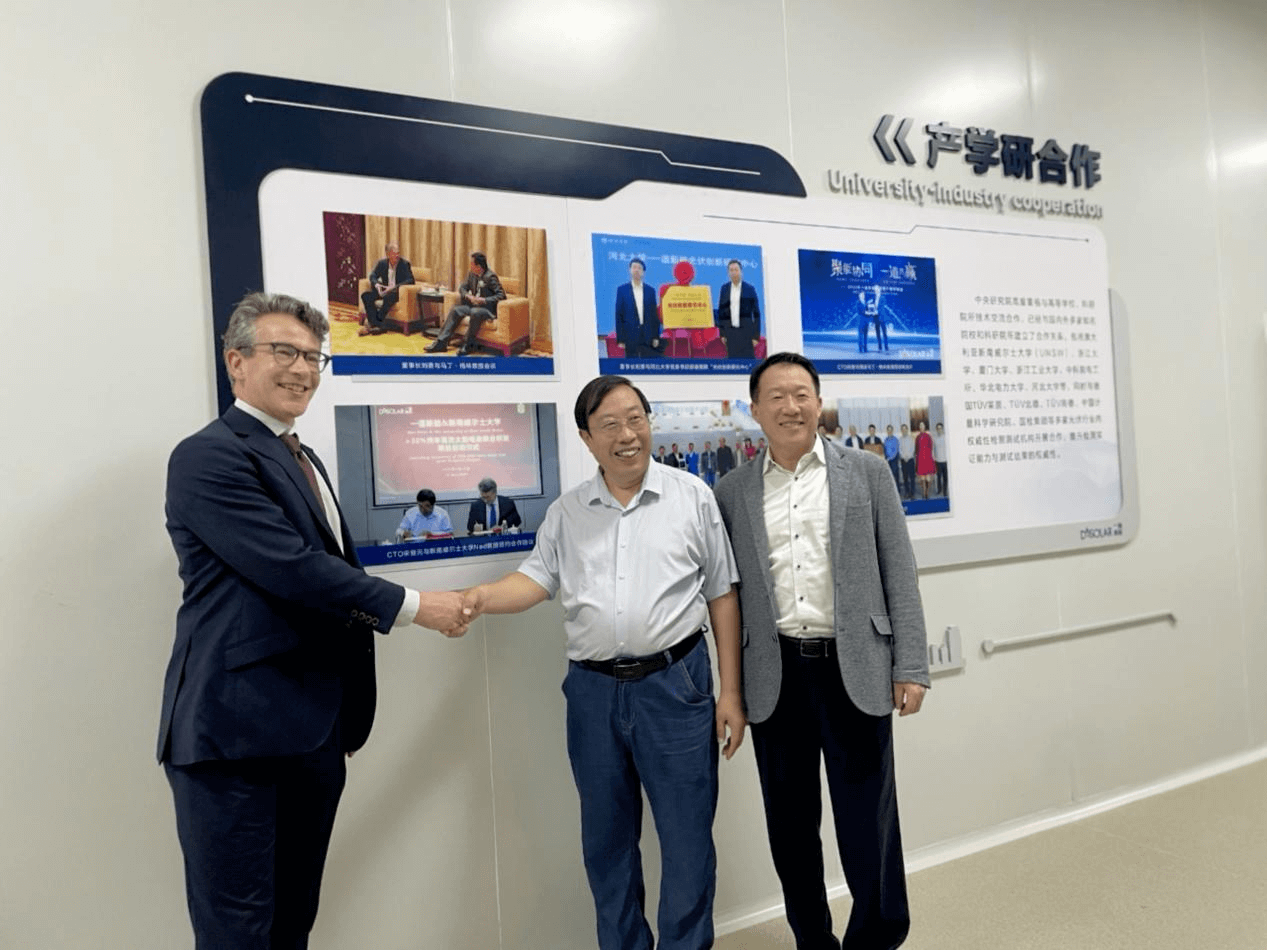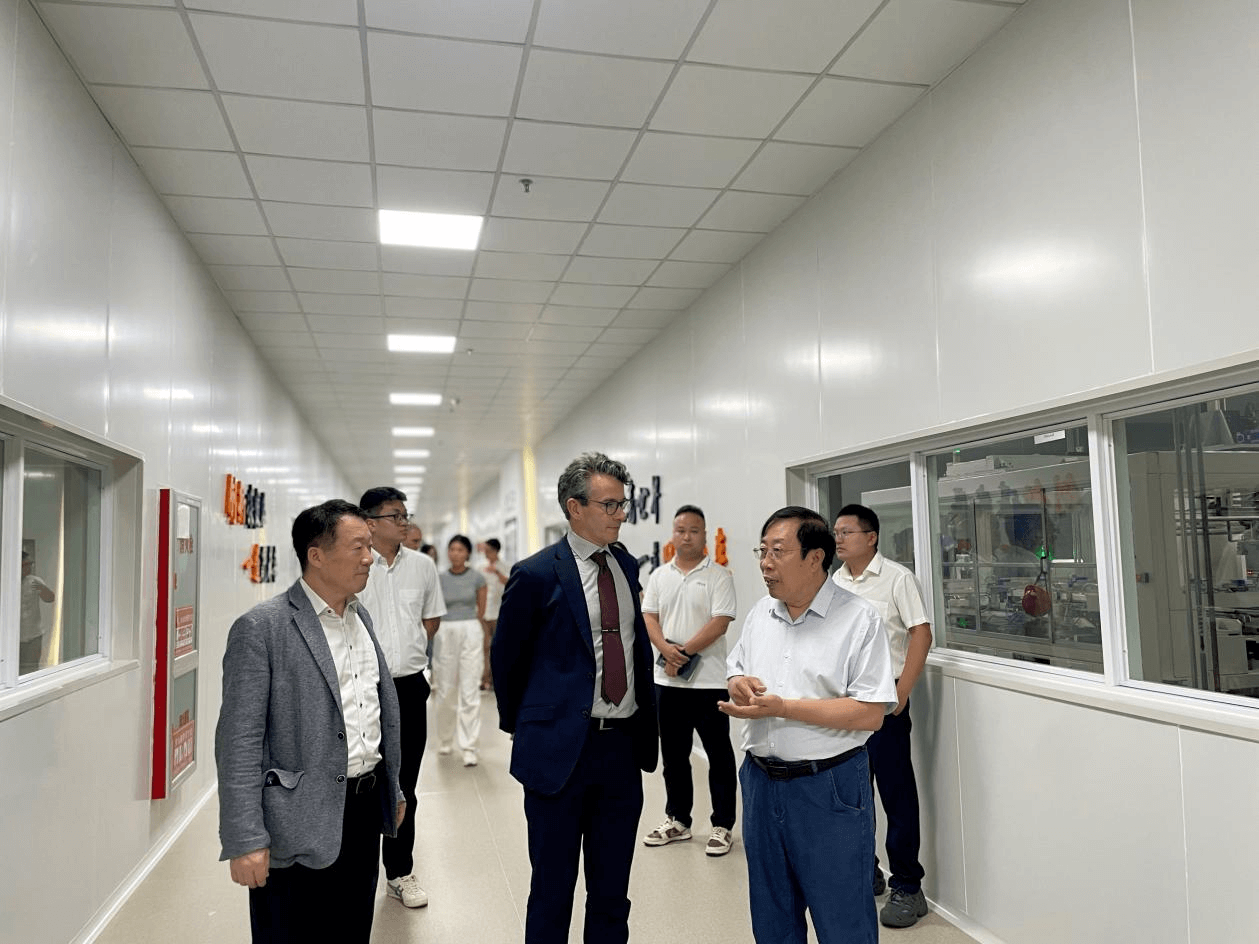DAS Solar Central Research Institute and Martin Green PV Lab Join Forces to Target 40% Cell Efficiency
2025-06-24
Quzhou, Jun. 24, 2025 - Professor Ned and a team of seven researchers from the University of New South Wales (UNSW) PV Laboratory—led by the world-renowned "Father of Solar Cells" Professor Martin Green—visited DAS Solar's Central Research Institute. This visit stems from a joint research agreement signed in May 2023 between the two parties, with a shared ambition of achieving a 40% cell efficiency through SFOS multi-photon technology.

Dr. Dengyuan Song, CTO of DAS Solar and Head of the Central Research Institute, along with Mr. Kangping Zhang, Deputy Director of the Institute and General Manager of R&D, held in-depth discussions with Professor Ned's team, focusing on the latest advances and commercialization prospects of high-efficiency SFOS cell technology.
Accompanied by Dr. Song and other DAS Solar experts, the UNSW delegation toured the Central Research Institute's labs and pilot production lines to gain insights into DAS Solar's technical capabilities in scaling SFOS technologies. During the tour, the team conducted a comprehensive review of the institute's testing and characterization platforms and gave praise to DAS Solar's achievements with the TOPCon 5.0 cell, which serves as the base cell for SFOS structures. With a 746 mV open-circuit voltage and a 27% mass-production efficiency, the TOPCon 5.0 technology not only demonstrates DAS Solar's technological leadership, but also provides a robust foundation for engineering the SFOS device, accelerating industrialization and cost reduction.

The two parties then held technical discussions on the key scientific and engineering aspects of SFOS technology. Professor Ned highlighted several recent breakthroughs that have emerged from the collaboration. One major advancement lies in the discovery of highly stable singlet fission materials. These materials can effectively generate multi-photon effects through the transfer of triplet excitons, providing new possibilities for significantly enhancing solar cell efficiency.
Meanwhile, the research team has made meaningful progress in developing interlayer materials for SFOS structures. These materials serve as a crucial interface between the TOPCon base cell and the upper photon-conversion layer, enabling the rapid and efficient migration of photogenerated carriers to the PN junction for extraction. This interlayer functionality is essential to ensuring high current generation and seamless charge transfer across the device.
Collectively, these foundational scientific achievements mark an important step forward in bridging experimental research with industrial-scale application, laying a solid groundwork for the eventual commercialization and mass production of SFOS technology. According to the joint development roadmap, the SFOS project is expected to enter industrial transfer by 2027.
DAS Solar places strong emphasis on academic-industry collaboration, actively working with leading domestic and international universities to drive innovation and industrial upgrading. In addition to its strategic partnership with UNSW, DAS Solar collaborates with top Chinese institutions such as Zhejiang University and Xiamen University to explore next-generation PV technologies and enhance its core competitiveness. These partnerships have delivered remarkable results in research, talent cultivation, and commercialization, establishing DAS Solar as a model of collaborative innovation in the renewable energy sector and injecting new momentum into the industry.






 浙公网安备33080302000236
浙公网安备33080302000236